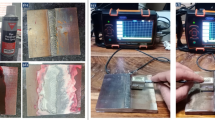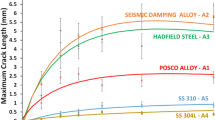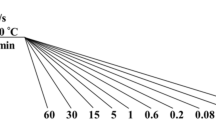Abstract
Tensile creep studies of the embrittlement of notched iron by liquid copper in the range 1100 to 1130° C have shown the embrittlement to be of the delayed failure type, from diffusion-controlled, grain boundary penetration by copper with accompanying extended surface notching. Linking of surface cracks and internal cavities along copper-penetrated grain boundaries was the final failure mode. Crack growth was determined by the rate and amount of copper diffusion ahead of a crack and not by the feed of liquid to the crack tip.
Similar content being viewed by others
References
W. Rostoker, J. M. McCaughey, andH. Markus “Embrittlement by Liquid Metals” (Reinhold, New York, 1960).
N. S. Stoloff, “Surfaces and Interfaces II” (1967 Conference) (Syracuse Univ. Press, New York, 1969).
N. S. Stoloff andT. L. Johnston,Acta Metallurgical 11 (1963) 251.
H. Nichols andW. Rostoker,ibid 9 (1961) 504.
R. R. Hough andR. Rolls,Scripta Metallurgica 4 (1970) 17.
G. G. Bentle andR. M. Kniefel,J. Amer. Ceram. Soc. 48 (1965) 570.
J. A. Williams andA. R. E. Singer,j. Inst. Metals 96 (1968) 5.
R. Eborall andP. Gregory,ibid 84 (1955) 88.
Author information
Authors and Affiliations
Rights and permissions
About this article
Cite this article
Hough, R.R., Rolls, R. Creep fracture phenomena in iron embrittled by liquid copper. J Mater Sci 6, 1493–1498 (1971). https://doi.org/10.1007/PL00020652
Received:
Accepted:
Issue Date:
DOI: https://doi.org/10.1007/PL00020652




